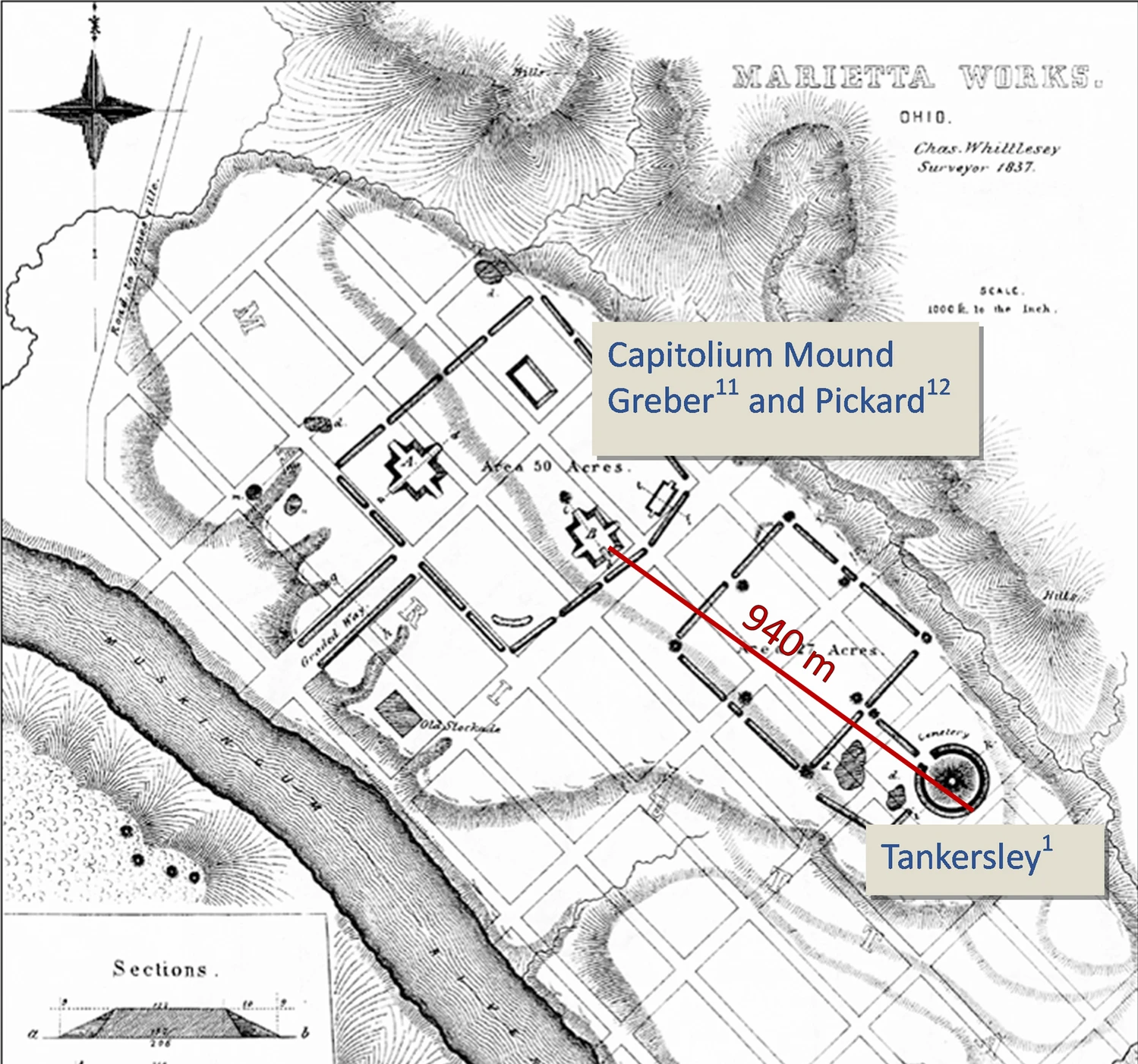None of the claims purporting to provide evidence for an astronomical end to North America’s Hopewell Culture stack up, according to experts from many relevant fields. Whatever caused the decline of the remarkable trade networks centered on the Ohio Valley 1,500 years ago, the authors of a response study are quite sure it wasn’t an exploding comet.
Since consensus emerged that an asteroid wiped out the (non-avian) dinosaurs a mix of scientists and enthusiastic amateurs have proposed smaller versions of something similar to explain more recent developments. The idea is not inherently implausible. Small asteroids hit the Earth all the time, and events like the Tunguska explosion could do serious local damage if they happened somewhere populated.
A large enough space rock would leave an unmissable crater, but Tunguska proves the possibility of an airburst, with an explosion large enough to do plenty of damage but leave no tell-tale basin. Numerous dramatic events over the last few thousand years have been attributed to something similar, most recently the fall of the Hopewell culture. However, there are plenty of skeptics unimpressed by the claims of what they call “team comet”, and some of them have come together to demolish previously presented claims.
For 600 years Native Americans traded from the shores of the Great Lakes to Florida, an enormous distance when all travel was on foot or by canoe. Often referred to as the Hopewell culture, this period covered a network of interlinked cultures, causing many anthropologists to refer to it as the Hopewell tradition instead. Around 1,500 years ago a decline occurred, with long-distance trade stopping and many of the markers of the tradition, such as the building of giant mounds, ceasing. The reasons remain unexplained.
Last year Kenneth Tankersley of the University of Cincinnati presented what he thought was the answer. Tankersley and co-authors provided multiple points of evidence for an airburst over southern Ohio including burned villages, meteorites, and a local upsurge in concentrations of minerals abundant in asteroids and comets.
Now a dozen scientists, led by Dr Kevin Nolan of Ball State University, claim every meaningful bit of this is wrong.
“There is no evidence for catastrophically burned habitations at any of the 11 Hopewell sites studied by Tankersley’s team,” Nolan said in a statement. “The burned surfaces identified by the University of Cincinnati researchers are either localized episodes of burning for ceremonial purposes, such as cremating the honored dead, or are not even burned surfaces at all.”
“Whatever meteorites are present at these sites were collected by ancient Indigenous peoples – probably from various locations – and brought to these Hopewell sites to be crafted into ceremonial regalia,” Noland continued. “The iron and silica-rich microspherules do not have the chemical composition typical of meteorites, and so are natural products of local soil chemistry.”

Claims of a cometary demise of the Hopewell culture depend in part on an inaccurate description of where on the Capitolium Mound site remains were found.
The scattered sites Tankersley claims were all destroyed together have very different ages, Nolan and co-authors argue, indicating that whatever caused the Hopewell decline was far too gradual to be a visitor from space. Indeed, while trading networks and large-scale construction declined, Nolan argues populations in the region were stable, inconsistent with a catastrophe.
Nolan himself is an archaeologist specializing in the study of the Ohio Valley at the time of the Hopewell tradition. Along with others of his own field he reached out to the Smithsonian’s meteorite expert Dr Timothy McCoy, who was equally unimpressed by Tankersley’s submission.
The paper pulls no punches, with quotes like: “Tankersley et al. misrepresent primary sources, conflate discrete archaeological contexts, improperly use chronological analyses, insufficiently describe methods, and inaccurately characterize the source of supposed extraterrestrial materials to support an incorrect conclusion.” This is no “we respectfully disagree.”
Indeed, the paper takes aim at what it calls “cosmic catastrophism”, such as the idea an explosion destroyed Tall El-Hammam, leading to the legend of Sodom and Gomorrah. “These scenarios oversimplify complex and dynamic human-environment interactions and are steeped in pseudoscientific beliefs rather than anthropological theories of social decline that can be tested using the archaeological record,” the authors write.
However, it is probably the criticism of data from the Jennison-Guard site that is likely to cut the deepest. Nolan and colleagues claim Tankersley has mixed up samples from spots 10 meters (33 feet) apart in distance, but widely separated in time, at the site he dug himself. Further from his expertise, Tankersley is accused of mixing up materials found in comets and two different types of meteorites.
The study is published open access in Scientific Reports.
Source Link: Did A Comet Really Wipe Out A Native American Culture 1,500 Years Ago?